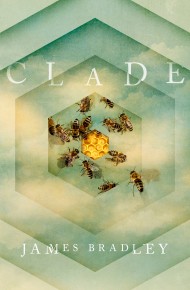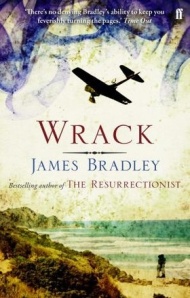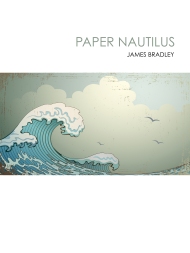William Gibson, Spook Country
One of the enduring curiosities of the information age is the role that much older form, the novel, and more specifically the novels of William Gibson, has played in its genesis. When Gibson published his first novel, the now undisputed classic Neuromancer, in 1984, it managed, with the deftness which was to become Gibson’s trademark, to take the vision of what were then little more than nascent subcultures and half-imagined technologies and craft a vision of a world which changed forever the way we thought about the possibilities of information of technology.
Whether Gibson actually coined the term “cyberspace” or not (the Australian writer Damien Broderick argues the term was actually his) he made the idea real, and in so doing, helped set in motion the movement which came to be known as cyberpunk.
Whether Gibson was ever really the writer many of his fans thought he was is a fascinating question. With their highly styled surfaces and nods to Burroughs and Pynchon and Chandler, Gibson was always too omnivorous and too sophisticated a writer to be easy within a genre, even one he pretty much invented. But either way, over the next decade and a half he produced a string of novels which seemed, as one critic has put it, “like dictation from the zeitgeist”.
Then in 2003, he published his first mainstream literary novel, Pattern Recognition. Set not in an imagined future but in the here and now, Pattern Recognition did not so much mark a shift in Gibson’s thinking as the closure of some kind of circle. Perhaps superficially that closure was simply about the present catching up to the future he had been writing about all along; what was science fiction in 1984, or 1994, or even 1999 was now reality. But while that may certainly have been part of it, something in the novel’s hauntingly elusive portrait of the subliminal power of images and of the lingering aftereffects of trauma suggests it was more to do with a sense the reality of the world we inhabit had somehow begun to exceed our capacity to describe it.
Centring upon the search for the garage auteur responsible for a series of fragmentary scraps of anonymous footage circulating virally through the internet, Pattern Recognition, like much American fiction of the past five years, was haunted by the sceptre of September 11. But where many of the fictional responses to those events, even the in many ways masterly Falling Man, have seemed curiously befuddled by them, Pattern Recognition stepped past their surface meanings and into their interior.
If Pattern Recognition is about the inner dimensions of the terrorist attacks on the World Trade Centre, Gibson’s new novel, Spook Country is an ironic glance at what comes after. Set in the same identifiable present (or identifiable past, to be exact, for Spook Country is in fact set in early 2006) it takes place against the backdrop of a country which has “developed Stockholm syndrome towards its own government”, and where government itself operates largely as a collection of private fiefdoms devoted to securing and maximising private gain.
At the novel’s centre lies another of Gibson’s emotionally wary, geographically rootless heroines, in this case Hollis Henry, formerly the lead singer of cult rock band The Curfew. Reduced to writing for a living by a series of bad investments, first in tech stocks and later in a record store, as the novel opens Hollis has come into the orbit of the slightly mysterious start-up magazine, Node, (“[a] European version of Wired, it seemed, though of course they never put it that way”).
Her first assignment is to begin with a profile of electronic artist Alberto Corrales. Alberto has been creating what his agent and curator, Odile Richard describes as “spatially tagged hypermedia”, or locative media art. Inhabiting the geospatial grid created by the GPS system, the work of Alberto and others like him is essentially a form of virtual sculpture, minutely realised images and scenes and sounds, tagged to specific locations by GPS coordinates.
As quickly becomes apparent though, neither Node nor its owner, the blandly enigmatic advertising guru Hubertus Bigend, are really interested in Alberto and his work at all. Their real interest is in the maths prodigy and programming genius Alberto uses to facilitate his sculptures, Bobby Chombo, and more specifically in the shipping container he has been helping parties unknown use the GPS system to track as it winds its way around the world.
Exactly why these parties unknown want the container is unclear, even to Bigend, who cheerfully admits he has no idea what it is they are after. But want it they do, and as Hollis and Bigend home in on the container so too are a group of moonlighting intelligence operatives headed up by the charmless Brown. Charmless, right-wing, humourless, Brown reports to figures within the government who have a very personal – and as it turns out, financial – interest in the container and its contents.
Unfortunately for Brown and his employers though, the container has disappeared off the grid, and for now at least, the secret of its whereabouts seems to reside with a Cuban-Chinese immigrant family, and in particular the youngest of its members, Tito, who has been passing information on its whereabouts to another shadowy ex-government figure. This second figure does not want the container, instead they want Brown’s employers, and so, with Tito’s help, contrive a plan to lure them into the open.
With its pared back prose, its cast of junkies, freelance spies and hackers, and its fast-moving, geographically restless narrative, Spook Country is, in many ways, classic Gibson. Tito might be a refugee from Virtual Light, or All Tomorrow’s Parties, as easily as a refugee from Castro’s Cuba, as might Milgrim the hapless benzo junkie co-opted by the charmless intelligence operative, Brown, to decipher Tito’s communications.
And yet Spook Country is directly and deliberately political in a way Gibson’s writing has not been in the past. Gone is the careful evocation of the human cost of loss which gave Pattern Recognition its emotional resonance, gone too is the highly stylised prose of All Tomorrow’s Parties. In their place is something far leaner and more focussed, as perhaps befits the novel’s subject.
Overtly political writing is a minefield for any writer. For all that great writing demands passion and intensity, few things kill fiction quicker than the sort of righteous anger which seems to demand we put pen to paper. But while it seems hard to avoid the fact that Gibson is, along with a sizeable portion of the world’s population, appalled and outraged by the cynicism and bad faith of the current US administration, Spook Country deliberately eschews becoming a diatribe, even offering, in one delicious scene, a quietly mocking portrait of his own indignation:
“Before she started packing [Hollis] called her own mother, in Puerto Vallarta. . . . She said that Hollis’ father was fine, except for having contracted, in his late seventies, a fierce and uncharacteristic interest in politics. Which her mother didn’t like, she said, because it only made him angry. “He says it’s because it’s never been this bad . . . but I tell him it’s only because he never paid it this much attention before. And it’s the Internet. People used to have to wait for the paper, or for the news on television. Now it’s like a tap running.””
This ironic edge infects the novel itself at a deeper level as well, not least in its attitude to the object which serves as the novel’s centre of narrative gravity, the mysterious shipping container. Gibson’s novels have often employed devices of this sort to order their often complex narratives, objects around which parallel stories circle, only to converge with surprising results. Sometimes, as with the mysterious footage that lies at the heart of Pattern Recognition, or indeed the strange, Joseph Cornell-inspired assemblages of Count Zero, the object itself matters, in some deep sense; at other times, as with the virtual reality goggles in Virtual Light, the object is merely a part of a larger scheme.
In Spook Country though, the container’s contents are basically irrelevant, except insofar as they drive the novel’s narrative. At one level this suits Gibson’s purposes, not least because it keeps the novel’s focus where it should be, which is on the greed and malfeasance of the government agencies and personalities who become the butt of the novel’s prankish denouement. But simultaneously it runs the risk of making the novel itself seem oddly weightless.
As ever though, Gibson is hunting bigger fish. While his tenure in the ghetto of science fiction has often allowed mainstream critics to overlook the wider implications of his writing, Gibson’s work more often bears comparison to writers like Don DeLillo or Richard Powers than his science fiction contemporaries. Stripped to its essence, his writing has always been fundamentally concerned with the impact of technology upon what we think of as being human, and in the related question of what its changes might mean for us as societies.
Yet unlike many, more classically oriented science fiction writers, his work has transcended the fairly narrow terms within which these questions are often considered. Despite the Joseph Cornell-inspired collage-building artificial intelligences of novels like Count Zero or the virtual life-forms of Idoru and All Tomorrow’s Parties, the real clues to Gibson’s thinking lie in the textures of his novels, in their fascination with the textures and surfaces of contemporary culture.
At a very basic level, this fascination has manifested itself in an almost erotic delight in the products of that culture. Gibson’s eye for objects and for design would put the editors of Wallpaper to shame, and – rather like that other keen observer of consumer culture, Bret Easton Ellis – he has an uncanny knack not only for picking what is on the cutting edge of cool, but also for blurring the boundaries between the real and the invention to such a degree that it is often hard to tell what he is making up, and what is actually real. Stuff, for Gibson, is cool.
But he is also one of the few contemporary novelists who have begun to come to grips with the consequences of technology, and in particular the transformation mass – or what Gibson prefers to call ubiquitous – media is unleashing all around us. The landscapes of his early novels, in particular the early cyberpunk trilogy of Neuromancer, Count Zero and Mona Lisa Overdrive now seem startlingly, if not uncannily prescient, not so much for the version of cyberspace they incorporated, but for the way they looked forward to a time when communication technology would begin to supplant reality itself. A time when, to paraphrase Bigend, mass media stopped inhabiting the world, and came to comprise it.
This transformation is woven through Spook Country, from Hollis’ father addicted to the running tap of ready-made outrage that is the internet to its deeper and more alarming portrait of a culture in which the old, “real” America has been supplanted by something else, a shell, or a facsimile, and where, like one of the Bush administration’s press conferences, reality is something able to be moulded to the needs of the moment, a place where the gnomic utterances of Donald Rumsfeld take on a sort of Zen wisdom.
In another writer’s hands such a vision might have lent itself to hand-wringing, but Gibson is too astute for that. Instead Spook Country reads like a delicious riff on the times, at once bleakly funny and blackly absurd. And while the world it shows us may not be fun, it most assuredly is.
Originally published in The Australian Literary Review, September 2007.
Break text










Trackbacks & Pingbacks